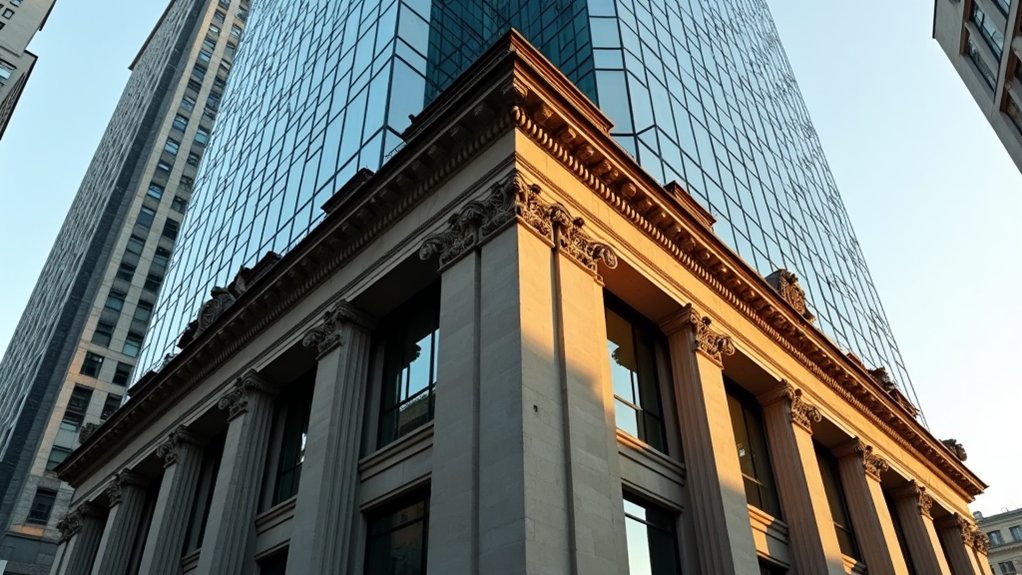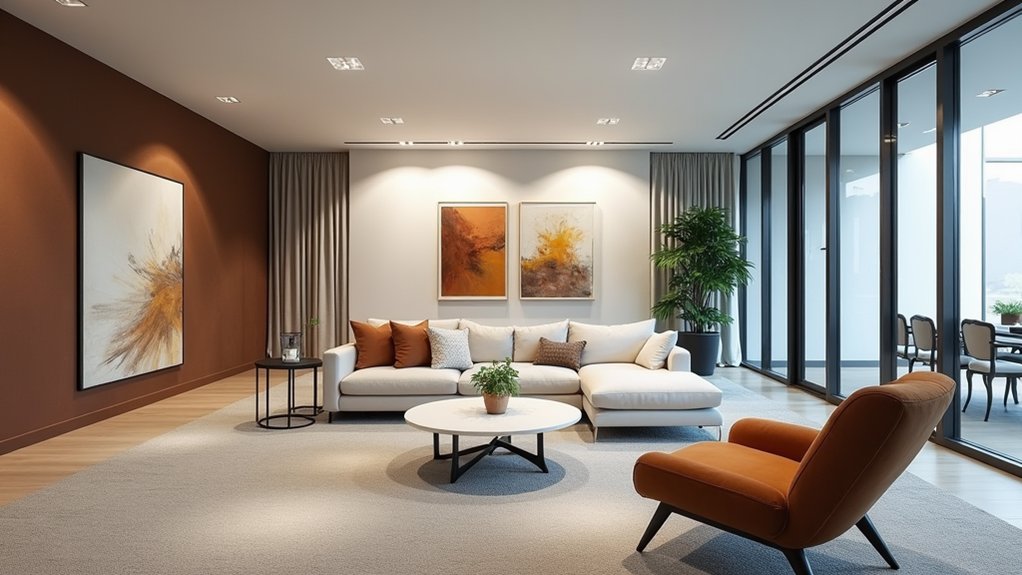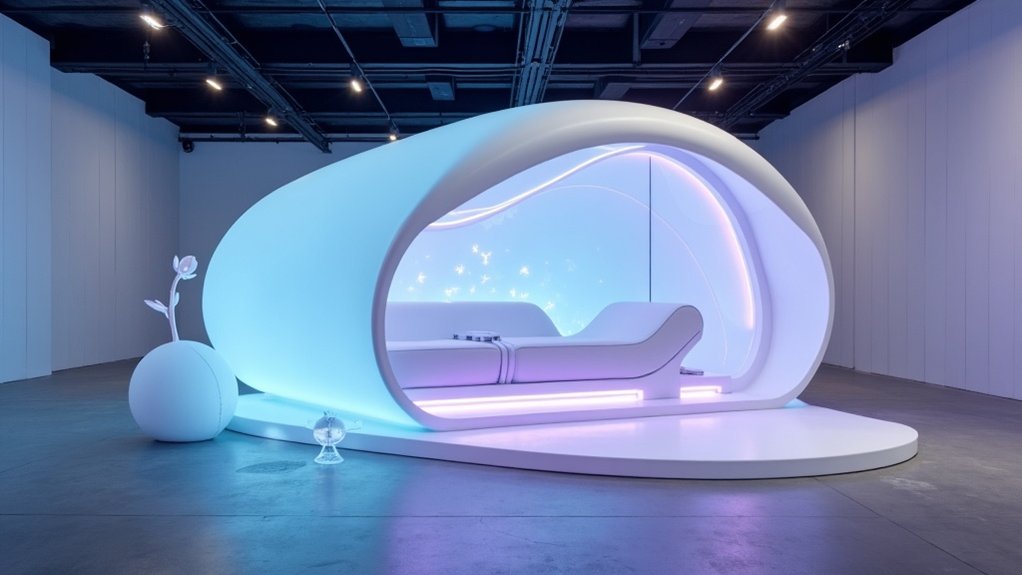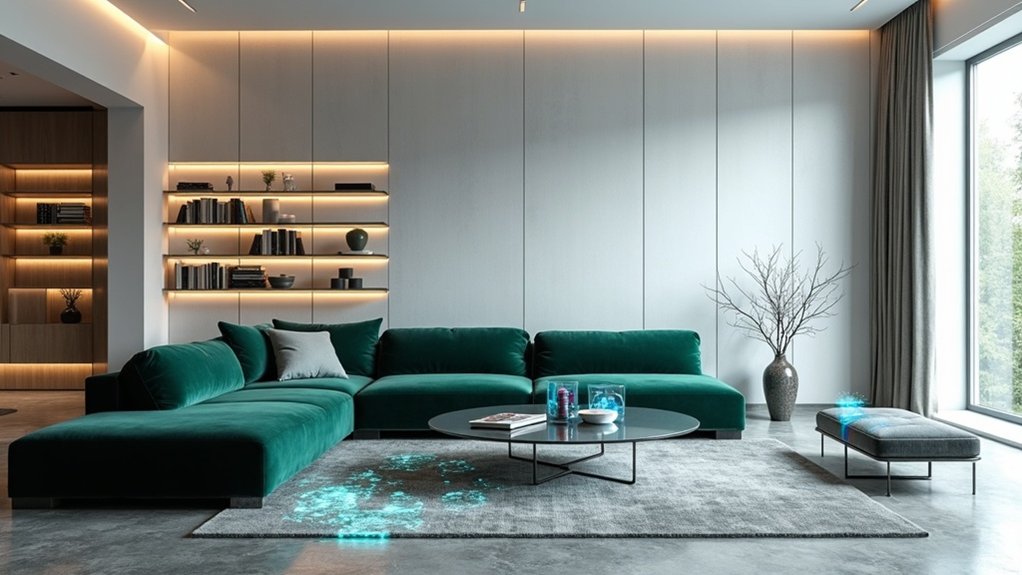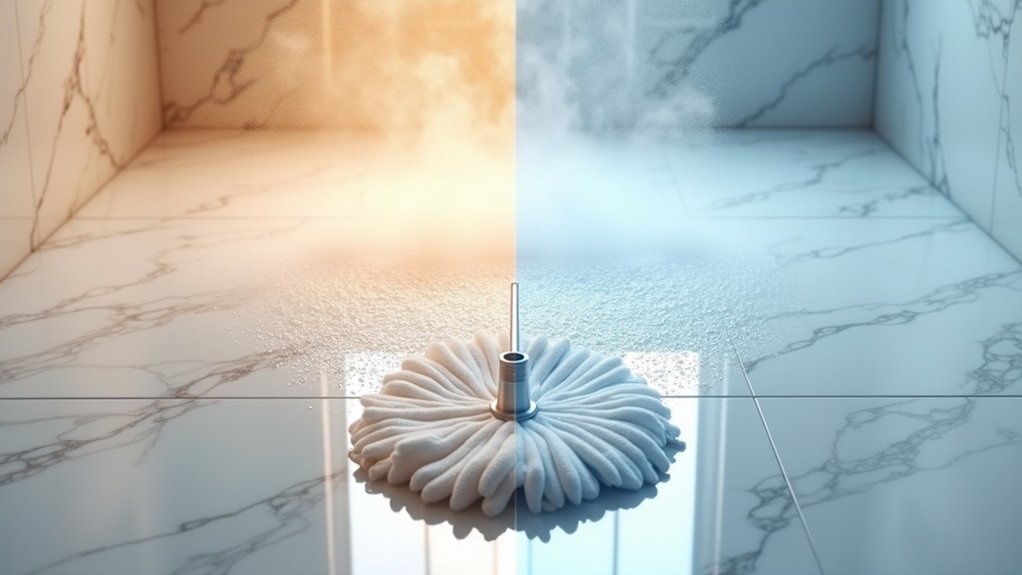While architectural philosophies have evolved dramatically over the past century, the contrast between modern office design and classic architecture reveals fundamental shifts in how organizations view workspace, hierarchy, and employee interaction.
Traditional offices, with their compartmentalized layouts and ornate wood furnishings, embodied corporate formality through explicit spatial hierarchies. Private offices and mahogany desks conveyed permanence and status, creating environments where roles remained clearly outlined. These spaces demanded substantial square footage per employee, with maintenance costs reflecting their material richness.
Mahogany desks and private offices once defined corporate hierarchy through spatial separation and material permanence.
Contemporary workplaces accept radically different principles. Open floor plans maximize density while encouraging spontaneous collaboration, replacing formal meeting rooms with flexible zones that adapt to changing needs. Steel, glass, and recycled materials dominate these environments, prioritizing sustainability over the timeless appeal of leather and hardwood. Modular furniture systems allow rapid reconfiguration, supporting project-based teams rather than fixed departmental structures.
Where classic offices reinforced vertical hierarchies through spatial separation, modern designs intentionally flatten organizational dynamics. Modern workspaces also incorporate ergonomic furniture to enhance employee comfort and reduce physical health issues associated with prolonged desk work.
Technology integration represents perhaps the starkest divide between these approaches. Modern offices seamlessly incorporate wireless connectivity, smart room controls, and integrated audiovisual systems from conception. Classic buildings often struggle with retrofitting, their solid walls and compartmentalized structures resisting the infrastructure demands of digital collaboration. This technological gap extends beyond convenience, fundamentally altering how teams communicate across locations and time zones.
Cultural implications run deeper than aesthetic preferences. Traditional layouts reflected industrial-age management theories emphasizing control and supervision. Modern designs respond to knowledge work’s collaborative demands, recognizing that innovation often emerges from informal exchanges rather than scheduled meetings. Studies show that good air quality in modern offices can increase productivity by 11%, highlighting how environmental factors influence workplace effectiveness.
Yet, this openness creates new challenges. Privacy concerns and concentration difficulties plague many open offices, leading progressive firms toward hybrid models that balance communal energy with focused work requirements.
The tension between preserving architectural heritage and meeting contemporary needs continues evolving. While classic architecture’s beauty endures in its craftsmanship and proportion, modern office design responds to fundamental shifts in how organizations create value.
Rather than killing traditional aesthetics, contemporary approaches reflect changing definitions of workplace effectiveness, suggesting that true timelessness lies in spaces that serve their users’ evolving needs.
